Camino de Santiago - French Way - Stage 1 - Saint Jean Pied-de-Port to Roncevalles
Total distance: 25 kilometres
Page 3 - Taking the route through Valcarlos
This route takes you through what is known as the Valley of Charlemagne. From the Rue de la Citadelle walk through the Porte d'Espagne, cross the bridge and walk up the Rue d'Espagne taking a right into the Rue D'Uhart. Walk along the Place Fluquet through the gateway and bear left where you will see a signpost saying that Arnéguy is in 8 kilometres. Follow this route for 6 kilometres then cross the bridge over the River Nive onto what used to be the main road and follow this until you reach Arnéguy, one of the last French villages on the route. It does have some shops, so you could buy yourself some provisions and there are also a number of pilgrim hostels and small hotels for the weary walker to spend the night.
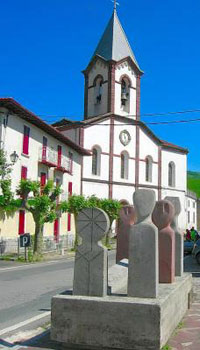
Continuing along the route along the N135 you will pass through a small village called Óndarolle before arriving at Valcarlos, a small town situated in a beautiful valley surrounded by forest. Here you will find a hostel and a number of small hotels (casas rurales), cafés, shops and a bank. It is also believed to be in this valley where Emperor Charlemagne was encamped when he heard of Roldáns defeat at the pass of Roncevalles.
The Iglesia de Santiago in Valcarlos contains a life-size statue of Santiago Matamoros (St James the Moorslayer) and outside there is a slightly odd sculpture of pilgrims.
Heading out of Valcarlos and crossing the River Chapital you will pass through the village of Ganecoleta and after approximately 4 kilometres, and a steep climb through the forest, you will re-join the Route de Napoleon at Puerta Ibañeta and it is then downhill all the way into Roncevalles.
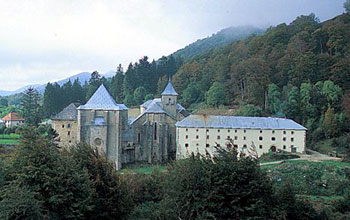
Roncevalles is a small hamlet with few amenities other than a couple of bars and hotel, however, the hamlet is dominated by the large collegiate church and monastery complex and is largely built around this. Part of this complex is the Pilgrim's hospital which was built in the 12th century by the bishop of Pamplona. This was re-built in the early 19th century and is now a youth hostel.
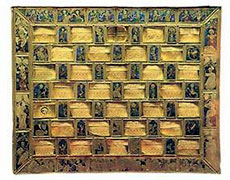
The Iglesia de la Real Colegiata de Santa María, within the collegiate complex, is one of the most impressive examples of French gothic architecture and well worth a visit. Built in the 13th Century by the Navarran King Sancho VII, el Fuerte it now plays host to his tomb. In the monastery's museum are housed some significant historical objects such as Charlemagne's chess board. This doesn't actually appear to have any link whatsoever with Charlemagne, it is essentially a 14th century reliquary reported to contain the remains of 32 saints. Where the name came from I do not know.
Also within the museum is the carved ivory horn called Oliphant that had once belonged to Roldán and which he used at the end of the battle at the Roncevalles pass. Actually much of the town's attractions appear to be linked to Roldán and Charlemagne in one way or another.
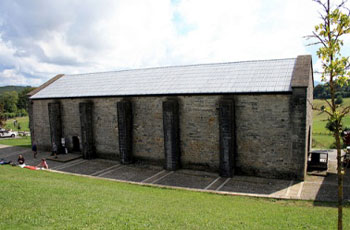
Another interesting building in the town is the Itzandegia a gothic style building from the 13th century which was believed to have housed the image of the Virgin of Roncevalles which is now located in the Iglesia de la Real Colegiata de Santa María. It was refurbished in the 1990's and is now used as a pilgrim refuge or Albergue.
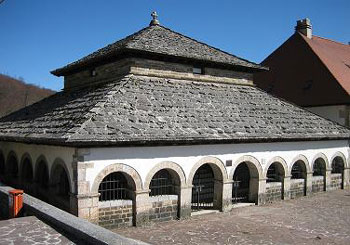
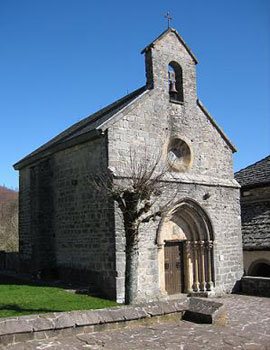
The 12th century Capilla de Sancti Spiritus, also known as the Silo of Charlemagne, is believed to have been the burial site of Roland, one of Charlemagne's knights and many other of the Emperor's men. The building is an ossuary and apart from the bones of the more illustrious knights of Charlemagne's army it contains the bones of medieval pilgrims who died whilst crossing the Pyrenees or those who died in the monastery's pilgrim hospital.
Next to it is the 13th century gothic Iglesia de Santiago, sometimes known as the Iglesia de los Peregrinos. This is no longer used as a church but now houses a museum containing objects relating to the Camino de Santiago including the bell that the monk used in the old chapel at Puerta de Ibañeta.
There are other sites worth visiting in Roncevalles and further information is available from the tourist office based in the old mill situated across from the Museum and opposite the Casa Sabina hotel.

